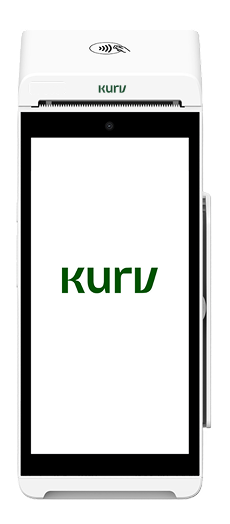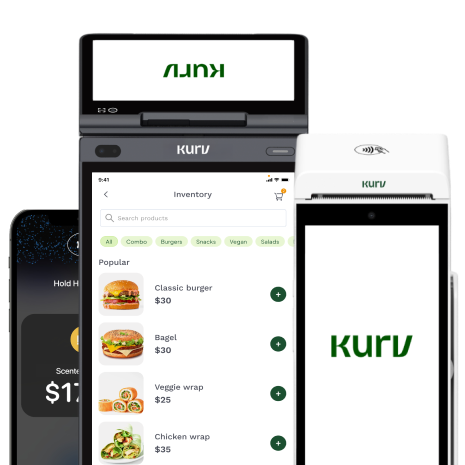Not entirely sure how an eCheck works? Don’t worry – we got you covered.
Key Takeaways:
- An eCheck is an electronic payment made directly from your checking account. It’s an electronic version of your paper check.
- The most obvious difference between an eCheck and a paper check is that the former is digital, while the latter is sourced from paper.
- Instead of manually filling out a paper check and mailing it, eCheck technology allows the process to happen electronically, saving time, postage, and paper waste.
- An eCheck is a faster and more secure payment method.
Just about everyone is familiar with the standard paper check. Traditionally, banks manually process a paper check payment and deposit the funds into the user’s bank. The clearing process can take days, after which the funds appear in the correct account.
Fortunately, technology has advanced, and the checking industry has taken advantage. This is where eChecks come in.
An eCheck is a digital version of a paper check, also known as an electronic check, internet check, online check, or direct debit.
An eCheck uses the Automated Clearing House (ACH) for electronic transactions from a customer’s checking account into a merchant’s business bank account with the help of a payment processor [1] PaymentCloud “What Is an Electronic Check? The Ultimate Guide to eCheck Payment Processing“. Accessed September 3rd, 2025. . Below, we’ll go over how eChecks can help your business.
What is an Electronic Check?
An eCheck is an electronic payment made directly from your checking account. It’s an electronic version of your paper check. When someone pays with an eCheck, funds go to the merchant’s business bank account through the Automated Clearing House [2] NACHA “The ABCs of ACH“. Accessed September 3rd, 2025. Network. Merchants must have electronic check processing set up to enable this payment type.
How are Electronic Checks Different From Paper Checks?
The most obvious difference between an eCheck and a paper check is that one is digital and one is paper. Why do both options exist?
Well, paper checks are well on their way to becoming obsolete. Fewer people are writing checks these days, and many prefer the convenience of digital payment options such as eChecks.
Below are just a few of the reasons why more and more people are choosing to pay with eChecks:
Millions of consumers make online purchases with safer, quicker, and easier digital forms of payment, and online retail sales are expected to continue to gain a larger share of overall commerce.
eChecks’ payment processing time is also much quicker than that of paper checks, as they occur digitally, speeding up the approval process.
Depositing paper checks at a bank involves significantly more manual effort and time compared to eChecks, which also benefit from faster processing and shorter hold times
How Do eChecks Work?
Electronic check processing is very similar to paper check processing. However, the clearing process is generally much faster. Instead of manually filling out a paper check and mailing it, technology allows the process to happen electronically, saving time, postage, and paper waste.
The steps involved in processing an electronic check are as follows [3] PaySimple “The 12 Most Popular Questions (and Answers) About eChecks“. Accessed September 3rd, 2025. :
Authorization Request
- A business must obtain authorization from the customer before completing the transaction.
- Authorization can be acquired via an online payment form with a digital signature or over the phone.
Setting Up the Payment
- Once the check is authorized, the business inputs the payment information into the online payment processing software.
Finalize and Submit
- Once all information is entered into the relevant payment software, the business submits it to facilitate the ACH transaction process.
Funds are Deposited
- The customer’s payment is automatically withdrawn and deposited into the business’s bank account.
- The customer receives payment confirmation. Electronic funds are typically deposited three to five business days after initiating the transaction.
Are eChecks Secure?
There are always security concerns regarding any payments made online. In many cases, electronic payments are generally considered more secure [4] The Street “What Is an E-Check and How Does It Work?“. Accessed September 3rd, 2025. than a physical check, primarily because there is no physical document to intercept.
Thieves have found ways to use physical checks for fraudulent transactions and identity theft over the years. For this reason and others, security remains a paramount concern for business owners looking to accept eChecks.
Authenticating an eCheck payment involves several steps, such as adding layers of security in the approval process. Those added layers of security are unavailable for physical checks. In effect, they protect all parties involved in the transaction. Ultimately, eChecks are a secure form of payment whose parameters will continue to evolve.
Benefits of Using eChecks
There are multiple benefits of using eChecks for business owners and customers. These benefits include:
- Lower Costs: Using eChecks for large payments—such as mortgage installments or insurance premiums—is a far more cost-effective option than credit card transactions.
- Quicker Turnaround: An eCheck can take as many days to clear as a paper check. However, because they do not require manually filling out a paper check and submitting it through the mail, eCheck transactions are usually a much quicker form of payment.
- Security: Paper checks can be easily tampered with, causing massive security breaches. eChecks are processed through the protection of the ACH network, so it’s improbable that someone will commit fraud by giving you a fake check.
- Automated Payments: If you make recurring payments, eChecks can be automated and sent out each month simultaneously.
What Kinds of Payments Can You Make with eChecks?
A merchant will pay their financial institution a small transaction fee to process eCheck payments. While credit card transactions typically have faster payment processing times, they tend to carry higher processing fees than eChecks. That’s why accepting eCheck payments for high-cost items like rent collection, mortgage payments, auto loan payments, and other high-cost monthly fees is becoming common.
Can an eCheck Bounce?
Unlike paper checks, eCheck customers can expect the funds to leave their account within three to five business days. Funds are typically verified in their accounts 24-48 hours after the payment is authorized.
If you don’t have the money to cover the transaction, digital payments will bounce like a typical paper check. The confirmed authorization by online payment form or phone call is your promise to pay the amount.
There may be fees to pay for your bounced check and penalties for late payments. We recommend setting up an alternative payment method to avoid unwanted fees and penalties.
Businesses Need a Merchant Account for Electronic Check Payment Processing
Businesses need a merchant account to process an electronic check. However, getting a merchant account is simple when you work with an established payment processor like Kurv.
Kurv offers payment method solutions, creating a simple and seamless payment experience for your valued customers. We empower companies with mobile processing, web commerce, and POS solutions. We also understand the importance of conveying digital payment literacy to the world, including eChecks. With Kurv, you can rest assured that you’re in good hands.




























